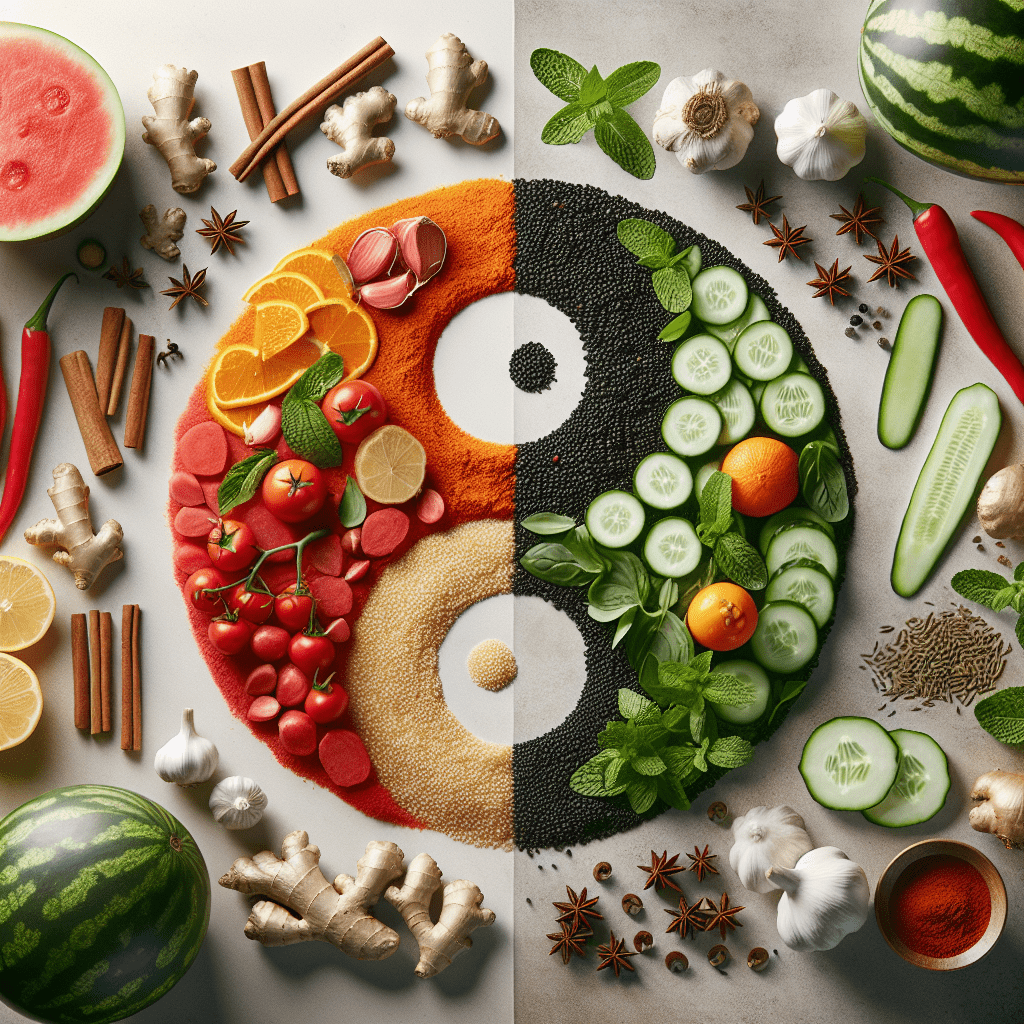In a world where nutrition trends come and go faster than the seasons change, there’s a wisdom that has stood the test of time for over two millennia. Eastern nutrition isn’t just another fad diet—it’s a profound philosophy that views food as medicine and eating as a sacred practice that nourishes not only the body but also the mind and spirit.
Unlike many modern approaches that focus solely on calories, macronutrients, and weight management, Eastern nutrition embraces a holistic perspective that considers your entire being. It recognizes that true wellness emerges from harmony within yourself and with the natural world around you. This ancient wisdom, born from Traditional Chinese Medicine and Ayurvedic traditions, offers us timeless principles that are remarkably relevant to our hectic modern lives.
What makes Eastern nutrition so powerful is its understanding that we are not separate from nature but an integral part of it. The same forces that cause seasons to change and plants to grow also flow through our bodies. By aligning our diet with these natural rhythms, we can achieve a level of wellness that goes beyond simply avoiding illness—we can thrive.
“When diet is wrong, medicine is of no use; when diet is correct, medicine is of no need,” goes an ancient Ayurvedic proverb that captures the essence of Eastern nutrition philosophy. This approach doesn’t just treat symptoms; it addresses the root causes of imbalance and disharmony that lead to health issues in the first place.
Finding Balance: The Dance of Yin and Yang
At the heart of Eastern nutrition lies the concept of balance, most famously expressed through the complementary forces of Yin and Yang. This isn’t just a philosophical idea—it’s a practical framework for making everyday food choices that support optimal health.
Yin represents the cooling, calming, and moistening aspects of foods. Think of cucumbers, watermelon, tofu, and leafy greens. These foods help cool an overheated system and bring calm to an agitated mind. Yang, on the other hand, embodies warming, energizing, and drying qualities. Foods like ginger, garlic, chili peppers, and most meats fall into this category, providing warmth and energy when we need it.
The beauty of this system is its flexibility. There’s no one-size-fits-all diet in Eastern nutrition. Instead, you learn to listen to your body’s needs, which change with the seasons, your activities, and even your emotions. Feeling cold and lethargic? You might need more yang foods to stoke your internal fire. Experiencing inflammation, irritability, or night sweats? Cooling yin foods could help restore balance.
Sarah, a yoga instructor from Colorado, discovered this principle when struggling with chronic inflammation and digestive issues. “Western doctors kept prescribing medications that just masked my symptoms,” she shares. “When I started working with an Eastern nutritionist who taught me about balancing yin and yang in my diet, I finally understood why my summer diet of raw salads and iced drinks was making me feel worse. Adding warming spices and cooked foods transformed my health within weeks.”
Diet plays a crucial role in maintaining this Yin-Yang balance. Foods are categorized based on their energetic properties and their effect on the body. A balanced meal often contains elements of both, adjusted for your individual needs and the current season. In winter, more yang foods help protect against the cold, while summer calls for more yin to counter the heat.
The Five Elements: Nature’s Blueprint for Nutritional Harmony
Beyond Yin and Yang, Eastern nutrition offers another powerful framework: The Five Elements Theory. This sophisticated system connects everything in the universe—including our foods and our bodies—to five fundamental elements: Wood, Fire, Earth, Metal, and Water.
Each element corresponds to specific organs in the body, emotions, seasons, and importantly for our purposes, tastes in food:
- Wood relates to the liver and gallbladder, with a sour taste (like lemons and vinegar)
- Fire connects to the heart and small intestine, with a bitter taste (such as dark leafy greens)
- Earth links to the spleen and stomach, with a sweet taste (think whole grains and root vegetables)
- Metal corresponds to the lungs and large intestine, with a pungent taste (onions, garlic, ginger)
- Water relates to the kidneys and bladder, with a salty taste (sea vegetables, miso)
This isn’t just fascinating theory—it’s remarkably practical. If your liver function needs support (perhaps you’ve been feeling irritable or experiencing eye problems—both associated with the Wood element), incorporating sour foods may help. Similarly, if you’re experiencing respiratory issues (Metal element), pungent foods like garlic and ginger might offer support.
Lisa Chen, a nutritional therapist specializing in Eastern approaches, explains: “The Five Elements Theory gives us a roadmap for understanding how different foods affect specific systems in the body. If someone comes to me with digestive weakness, I know to focus on Earth element foods and cooking methods. It’s like having a user manual for the human body.”
Research continues to validate these ancient insights. Studies have shown that bitter foods, associated with the Fire element, indeed support heart health by reducing inflammation. Similarly, fermented foods with sour tastes (Wood element) have been proven to support liver function and detoxification pathways. Recent research has also shown connections between Eastern healthy dietary patterns and reduced all-cause mortality.
Wisdom from the East: Ayurveda and Traditional Chinese Medicine
Two major traditions form the backbone of Eastern nutrition: Ayurveda from India and Traditional Chinese Medicine (TCM). While they developed independently, these systems share remarkable similarities in their fundamental principles.
Ayurveda, meaning “knowledge of life,” classifies individuals into three main constitutional types or doshas: Vata (air and space), Pitta (fire and water), and Kapha (earth and water). Your dosha determines which foods best support your health. A fiery Pitta type, for instance, benefits from cooling foods, while an airy Vata thrives with grounding, warming meals.
TCM, meanwhile, emphasizes the vital life force called Qi (pronounced “chee”) that flows through energy channels in the body. Certain foods enhance Qi, while others may deplete it. TCM also recognizes that different foods have different “temperatures” regardless of how they’re served—some warm the body’s energy, while others cool it.
Both traditions emphasize whole, unprocessed foods as medicine, with an emphasis on plant-based ingredients. A traditional Eastern diet typically features:
- A foundation of whole grains
- An abundance of seasonally appropriate vegetables
- Moderate amounts of fruits
- Small portions of high-quality proteins
- Minimal processed foods
- Mindful use of herbs and spices as medicine
The TAIM food pyramid (Traditional Asian Island Medicine) illustrates this approach beautifully, placing emphasis on sound nutrition, food safety, social connection, and sustainability—concepts that are only now gaining recognition in Western nutrition science.
What’s particularly valuable about Eastern nutrition traditions is their emphasis on seasonal eating. Rather than consuming the same foods year-round (a modern phenomenon made possible by global shipping), these traditions encourage us to align our diets with nature’s cycles.
“In spring, eat more foods with upward energy like young greens and sprouts to support the liver’s detoxification work,” explains Dr. Ming Chen, a TCM practitioner. “In summer, cooling foods help balance the season’s heat. Fall calls for more drying foods to counter dampness, while winter requires warming, nourishing foods that build reserves.”
This seasonal approach not only supports the body’s natural processes but also ensures greater nutritional variety throughout the year—a principle modern nutritionists now recognize as essential for gut health and microbiome diversity.
Mindfulness: The Missing Ingredient in Modern Nutrition
Perhaps one of the most valuable lessons Eastern nutrition offers our fast-paced world is mindfulness around eating. How we eat is considered just as important as what we eat.
In Eastern traditions, meals are not something to be rushed through while scrolling on smartphones or watching TV. Eating is a sacred act—a time to nourish not just the body but also the soul. By bringing full awareness to our meals, we enhance digestion, prevent overeating, and develop a deeper relationship with our food. This approach aligns with what modern research on Mediterranean diets also suggests about eating with meaning and intention.
Traditional practices include:
- Taking a moment of gratitude before eating
- Chewing thoroughly (some traditions recommend 30-50 chews per bite)
- Eating in a calm, pleasant environment
- Avoiding intense discussions or negative emotions during meals
- Stopping when 80% full rather than eating to maximum capacity
Modern science has caught up with these ancient teachings, confirming that mindful eating improves digestion, reduces stress hormones, and helps maintain a healthy weight. A 2018 study published in the Journal of Obesity found that mindful eating practices were more effective for long-term weight management than conventional diet programs.
The beauty of Eastern nutrition principles is their adaptability to contemporary lifestyles. You don’t need to completely overhaul your diet overnight or source exotic ingredients. The journey begins with awareness—paying attention to how different foods make you feel, noticing the effects of eating in different seasons, and gradually incorporating more balance into your meals.
Ancient Wisdom Meets Modern Technology: The HerbalsZen Approach
While these time-tested principles of Eastern nutrition offer profound wisdom, navigating them can feel overwhelming in today’s complex world. How do you determine your constitutional type? Which foods will best balance your unique body? How do you adapt seasonal eating to modern lifestyles and food availability?
This is where integrating ancient wisdom with modern technology creates a powerful partnership. HerbalsZen’s innovative EASTCHI AI system represents this fusion—combining 2,000-year-old Eastern nutritional principles with cutting-edge artificial intelligence to create truly personalized nutrition plans.
Unlike generic diet apps that focus solely on calories or macros, EASTCHI AI analyzes your unique constitutional type according to Five Element Theory, considers seasonal influences, and provides customized recommendations that honor the holistic nature of Eastern nutrition. This technology serves as a bridge between ancient wisdom and modern life, making these profound nutritional principles accessible and practical for today’s health-conscious individuals.
The system recognizes that true health isn’t about following rigid rules but about developing an intuitive understanding of your body’s needs and how they change over time. It empowers you with both the “why” and the “how” of Eastern nutrition, fostering a deeper connection with your food and your body.
By embracing Eastern nutrition principles—whether through traditional study or with technological support—you tap into a wisdom that has guided human health for thousands of years. This isn’t about rejecting modern nutritional science but about enriching it with time-tested insights that view the human body as an integrated whole, connected to the natural world in profound ways. For a deeper dive into this approach, explore why these 2,000-year-old dietary principles remain so effective today.
The ancient Chinese text, the Yellow Emperor’s Classic, states: “The wise prevent disease rather than attempt to cure it.” Eastern nutrition offers exactly this wisdom—a path to prevent imbalances before they manifest as disease, to nourish not just the body but the mind and spirit as well. In our modern world of nutritional confusion and chronic health challenges, this 2,000-year-old approach offers a clear, balanced path forward.




